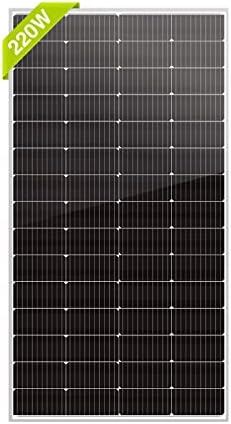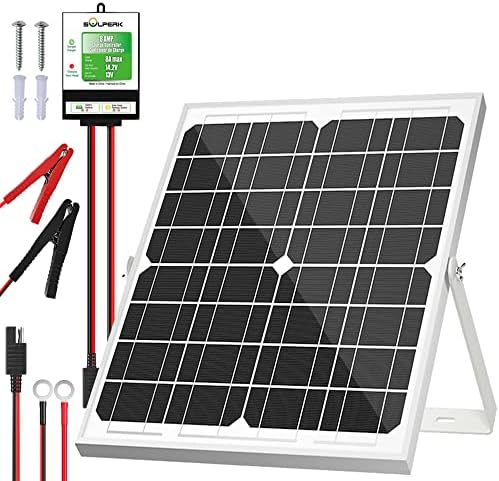## Breaking Down Solar Panel Options: A Comprehensive Comparison
Picture this: It’s a bright morning in the heart of nature, the sun shining down while birds serenade the day away. You’re sipping your coffee, knowing that every ember of energy you consume comes from a renewable source, specifically, your solar panels. I can still recall the thrill of first flipping the switch on my solar setup, the gentle hum of the inverter a soft reminder of my newfound independence. Diving into the world of off-grid living and solar energy opens up a treasure chest of options. With so many solar panel choices on the market, how do you determine the best fit for your lifestyle? Let’s embark on a lively exploration of solar panel options, breaking down everything from efficiency to cost.
### Understanding Solar Panel Types
Before diving headfirst into the numbers, it’s essential to know the three main types of solar panels: **Monocrystalline**, **Polycrystalline**, and **Thin-Film**. Each has its unique characteristics, benefits, and drawbacks.
#### 1. Monocrystalline Solar Panels
Monocrystalline panels are the darlings of the solar world. Made from a single crystal structure, these panels are known for their high efficiency and sleek aesthetics. Typically, they range from 15% to 22% efficiency, meaning they convert a significant portion of sunlight into usable energy.
**Pros:**
– **Space Efficient**: Higher power output relative to size.
– **Long Lifespan**: Typically comes with 25-year warranties.
– **Aesthetically Pleasing**: Sleek black finish enhances visual appeal.
**Cons:**
– **Higher Cost**: They generally come with a premium price tag.
– **Performance Drop in Heat**: Efficiency can decrease slightly in high temperatures.
#### 2. Polycrystalline Solar Panels
Polycrystalline panels are the workhorses of the solar panel industry, made from multiple crystal structures. While they don’t quite match the efficiency of monocrystalline panels, they remain a solid choice, typically around 13% to 16% efficiency.
**Pros:**
– **Cost-Effective**: Generally cheaper due to lower manufacturing costs.
– **Solid Performance**: Performs well in various conditions.
**Cons:**
– **Lower Efficiency**: Requires more space to achieve the same energy output.
– **Less Aesthetic Appeal**: The bluish hue may not suit all styles.
#### 3. Thin-Film Solar Panels
Thin-film solar panels represent the innovative edge of solar technology. Made by layering photovoltaic materials, these panels are lightweight and flexible, suitable for installations where weight and space are concerns. However, they experience lower efficiency, typically around 10% to 12%.
**Pros:**
– **Lightweight and Flexible**: Versatile for unconventional installations.
– **Bends and Shapes**: Easier to integrate into roofs or other structures.
**Cons:**
– **Lower Efficiency**: Requires much more surface area.
– **Shorter Lifespan**: Usually, fewer warranty years compared to crystalline options.
### The Efficiency Equation
Solar panel efficiency is crucial when selecting the right setup. It determines how much energy you can generate from the same amount of sunlight. Let’s break down factors that influence efficiency:
– **Temperature Coefficient**: Check this when comparing different panels. A lower coefficient means better performance in warmer conditions.
– **Shading**: A shaded panel significantly impacts overall performance. Consider the orientation and potential obstructions like trees when planning your setup.
– **Installation Angle**: The angle of installation can make or break efficiency. Opt for an angle that maximizes sunlight exposure based on your geographical location.
### Cost vs. Value
When budgeting for solar panels, it’s key to distinguish between upfront costs and long-term savings. While monocrystalline panels might initially seem steep, higher efficiency can lead to quicker payback periods.
– **Monocrystalline Range**: $1.00 to $3.00 per watt
– **Polycrystalline Range**: $0.70 to $2.00 per watt
– **Thin-Film Range**: $0.50 to $1.50 per watt
### Pro Tips for Choosing Solar Panels
1. **Assess Your Energy Needs**: Conduct a thorough evaluation of your energy consumption. This can help you determine how many panels you’ll need based on your chosen type.
2. **Evaluate Local Incentives**: Check for state or federal incentives, tax credits, or rebates available for installing solar.
3. **Research Warranty and Lifespan**: A longer warranty often indicates higher product quality. Look for panels with at least 25 years of warranty.
4. **Read Reviews**: Real user feedback can provide insights into performance and reliability you won’t find in product specifications.
5. **Consult Experts**: When in doubt, consulting professionals can help tailor a solar solution that meets your unique needs.
### Hybrid Systems: Combining Technologies
In some situations, a hybrid approach may be best. Combine different types of panels to maximize space or efficiency. For example, you could use thin-film for portable applications (like RVs) and monocrystalline for stationary installations.
### Battery Storage Considerations
Opting for solar panels often leads to the next big decision: battery storage. If you plan to live off the grid, investing in a solid battery system is crucial to ensure you have power when the sun isn’t shining. Here are popular battery options:
– **Lead-Acid Batteries**: Cost-effective but heavy and have a shorter lifespan (around 5-10 years).
– **Lithium-Ion Batteries**: More expensive initially but lighter and typically last 10-15 years with better efficiency.
### The Right Solar Inverter
After selecting the type of solar panel, consider the inverter, a key component that converts direct current (DC) from the panels to alternating current (AC) for home use. You’ll typically face three choices:
1. **String Inverters**: A standard choice, best for installations without shading issues.
2. **Microinverters**: Ideal for roofs with varying pitch and shade, providing optimal output from each panel.
3. **Power Optimizers**: Combine the benefits of string inverters and microinverters for higher efficiency.
### The Future of Solar Technology
The solar industry is rapidly evolving, with exciting developments on the horizon. From bifacial panels—designed to capture sunlight from both sides—to innovations in solar roofing materials that blend seamlessly into your home, the possibilities are endless. Keeping an eye on advances in this space can provide insights into potential long-term investments for your off-grid lifestyle.
### Conclusion
In the quest for the perfect solar panels, it’s crucial to consider types, efficiency, cost, and future technology. With a bit of research and some soul-searching about your energy needs, you can find the solar solution that perfectly aligns with your lifestyle choices.
As you navigate this journey toward sustainable living, remember that each solar panel installed is a step toward energy independence and a reduction of your carbon footprint. The sun’s rays are waiting for you—time to harness their power and enjoy the freedom that comes from living off the grid!
The sun is shining, nature is calling, and it’s the perfect time to take the leap into solar energy. Happy solar hunting!



